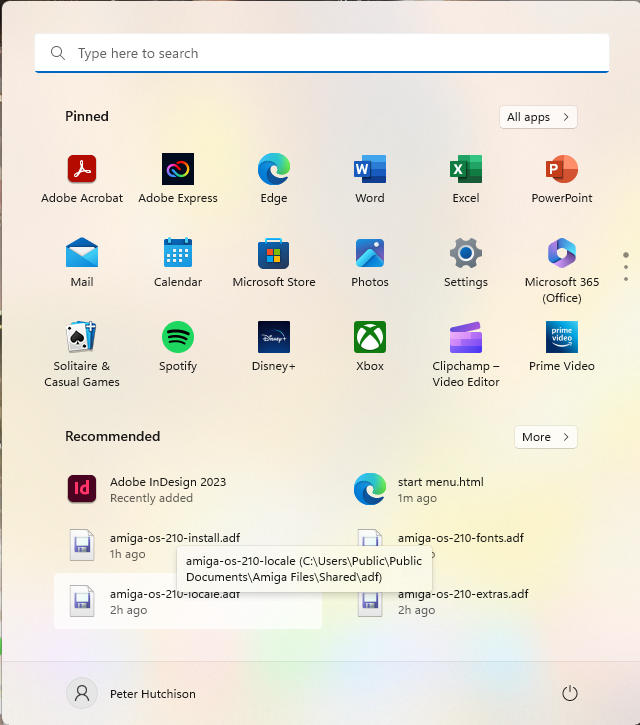
 |
Windows Guide |
In Windows 11, the start menu has changed since Windows 10, it has moved from the bottom left to the bottom middle. Here most programs, applications, tools and accessories can be accessed.

Most of the icons can be found in C:\ProgramData\Microsoft\Windows\Start Menu\Programs.
Click on All Apps will display all the available programs as list like the old start menu.
The botton most icons call the following:
a) Account name. Change account settings, lock screen and sign out.
b) Access the sign-in options, sleep, hibernate, shut down or restart of the PC.
Right clicking a program icon in the middle section will give the following options:
a) Move to front.
b)
Pin or Unpin from start. Remove icon from the tiles on the right of the menu.
c) Run as administrator. Run the program with administrator privileges.
d) Pin to task bar. Add the icon to the taskbar at the bottom of the screen.
e) App Settings for Windows apps
f)
Open file location for regular Windows programs.
g) Uninstall. Remove the program completely.
Under recommended, you can access recently access program files and documents. Clicking on More will
display of list of recently accessed files.
If you right click the start menu (or press Windows+X), the you get the following administrative options:
a)
Installed Apps.
b) Power options.
c) Event viewer.
d) System.
e) Device Manager.
f) Network Connections.
g) Disk Management.
h) Computer Management.
i) Terminal
j) Terminal (Admin)
k) Task Manager.
l) Settings.
m) File Explorer.
n) Search.
o) Run.
p) Shut down or sign out.
q) Desktop.
Note that Terminal now replaces and combines the functionality of the Windows PowerShell and Command Prompt programs into one accessible application.